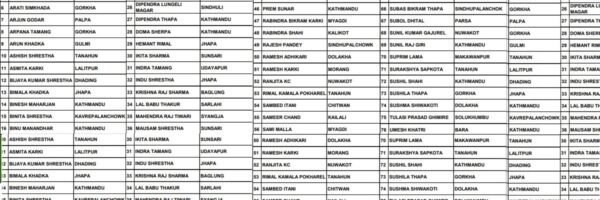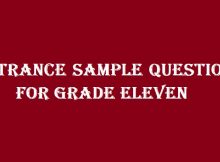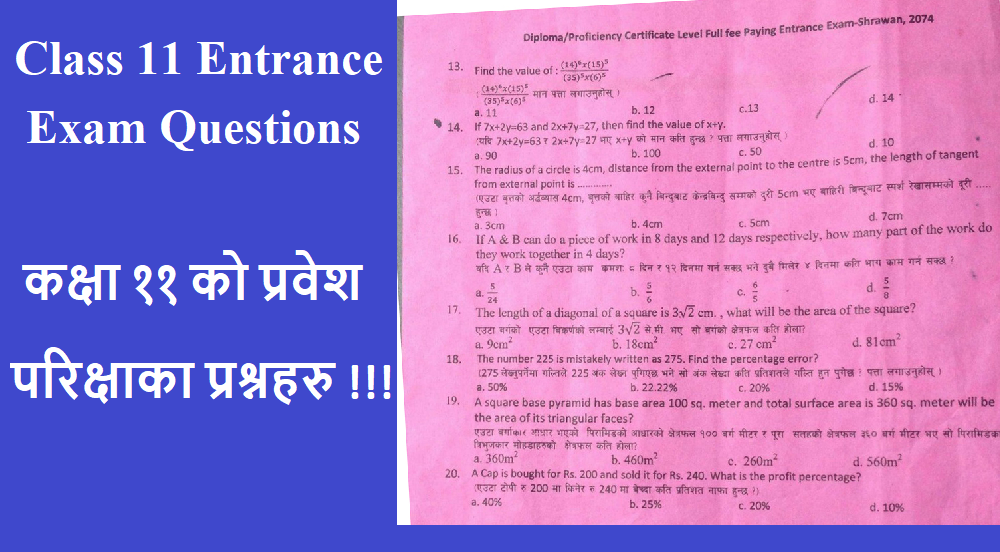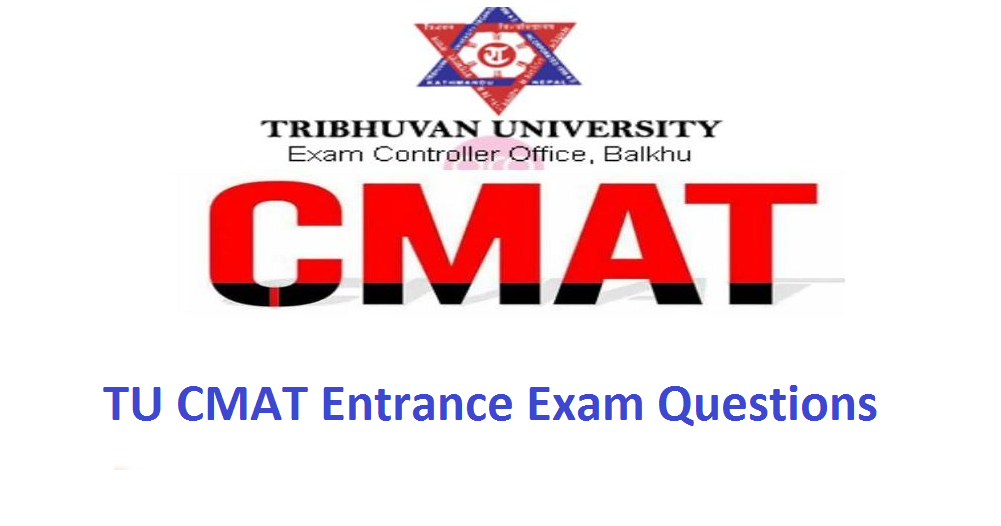Important sample questions collection is here. Students preparing for grade eleven entrance exams can use this entrance sample questions widely.
These entrance sample questions are prepared by well experienced teachers. So teachers more than 20 years experienced in renowned schools are involved here.
Here we have given the practice questions for science. There are many students preparing for grade eleven science entrance exams.
Entrance Sample Questions for Grade Eleven Chemistry
Table of Contents
- Naturally occurring boron consists of two isotopes whose atomic masses are 10.01 and 11.01. The average atomic mass of naturally occurring boron is 10.81. Calculate the percentage of each isotope in natural boron.
- How many atoms of sodium react with water to form 0.5 mole of hydrogen gas?
- State the law of reciprocal proportion.
- Calculate the mass of 60% H2SO4 required decomposing 50 g of chalk (CaCO3).
- Write the equation relating:
- Density with the pressure of a gas at constant temperature. Name the law which relates these parameters.
- Density with the temperature of a gas at constant pressure. Name the law which relates these parameters.
- Define vapor pressure of a liquid. What is the effect of temperature on the vapor pressure of a liquid?
- State Graham’s law of diffusion. How it differs from the term effusion?
- The atomic mass of an element is doubled its atomic number. If there are four electrons in the 2p- orbital, then name the element and draw its electronic configuration.
Entrance Sample Questions for Grade Eleven Chemistry
- Define Pauli Exclusion Principle. Why is it called exclusion principle?
- Define the term oxidant and reductant. Give an example in each case.
- Calculate the value of Kc for the following reaction:
- Why H2O is liquid while H2S is a gas?
- Write the Lewis structure of :
- H2O2 and ii) H2SO
- When lime stone is heated, a compound A is formed. The compound A in water forms compound B. On passing CO2 gas through a solution of compound B, white precipitate reappears. Write the formula of A and B and also write the balanced chemical equation.
- What happens when ammonium hydroxide is gradually added to the aqueous solution of blue vitriol till excess?
- A test tube contains a solution of one of the following:
NaCl, NaBr and NaI. Describe the single test that can distinguish among these salts.
- Give the reaction involved in the laboratory preparation of SO2 What happens when SO2 is passed through acidified solution of potassium permanganate?
- Write the IUPAC name of the following compounds:
- What happens when sodium propionate is heated with soda lime?
- Define an electrophile and nucleophile giving an example from each.
- Why does table salt get wet in rainy season?
- What do you mean by flux and slag? Give one example from each.
Entrance Sample Questions for Grade Eleven Chemistry
- 48 gm of magnesium combine with 32 gm of oxygen and produce 80 gm of magnesium oxide. Which law do these illustrate? State the law.
- State and explain Avogadro’s hypothesis.
- Differentiate between crystalline and amorphous solid.
- Why does hydrogen gas show large number of line spectra though hydrogen atom contains one electron?
- An atomic orbital has n=3. What are possible values of l and m?
- What are radioisotopes? Give an example.
- Give Lewis structure of i) N2O5 ii) N2O3.
- How does electron pool theory explain the thermal conductivity of metal?
- A student reported that the radii of Cu,Cu+ and Cu++ are 96 pm,122 pm and 72 pm respectively. Do you agree with the reported values? Justify the answer.
- Identify oxidizing and reducing agents in the following redox reactions.
- Cr2O7— + H+ +C204— ® Cr++ + CO2 + H20
Also give reason to support your answer.
Entrance Sample Questions for Grade Eleven Chemistry
- Define law of mass action. What is the relation between Kp and Kc for following reaction? PCl5(g) ® PCl3(g) + Cl2(g)
- How does superoxide differ from peroxide? Give one example of each.
- A compound ‘X’ on gentle heating with slaked lime evolved a gas ‘Y’which gave dense white fumes with conc. HCl. Name ‘X’ and ‘Y’. Write down the equation for the reaction involved.
- Write the formula and use of the followings: a)Borax b)Hypo
- Write the action of hot aq.NaOH on white phosphorus.
- What do you mean by photochemical smog?
- Give a concise account of electro-refining of impure metal.
- Write the action of water on quicklime.
- Define electrophile and nucleophile with examples.
- How does ethyne react with sodium metal? What information do you get from this reaction?
- Ozonolysis of an alkene ‘A’ followed by hydrolysis with water and zinc gave a mixture of two isomers of the formula C3H6O. Give the structure of alkene.
Read More:










